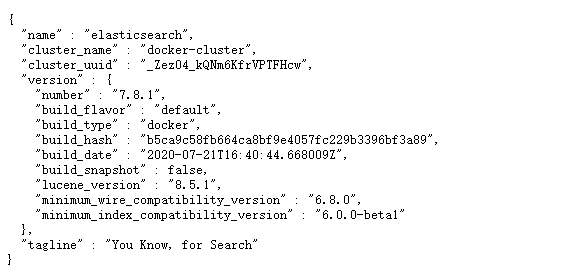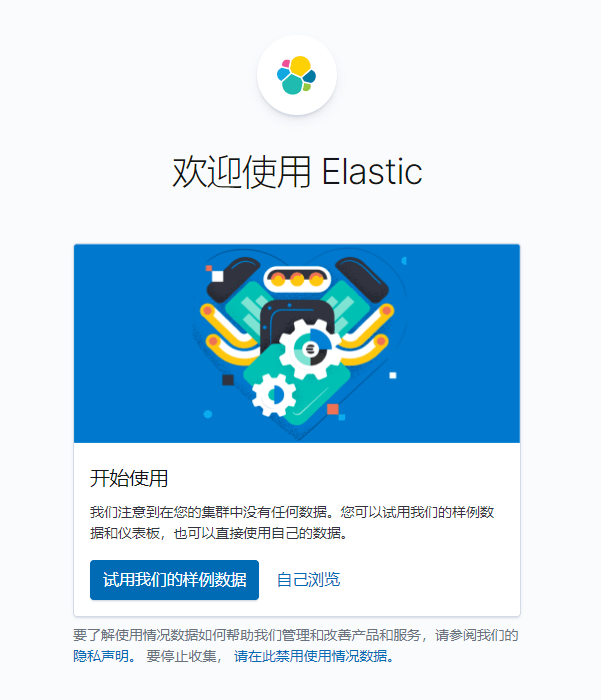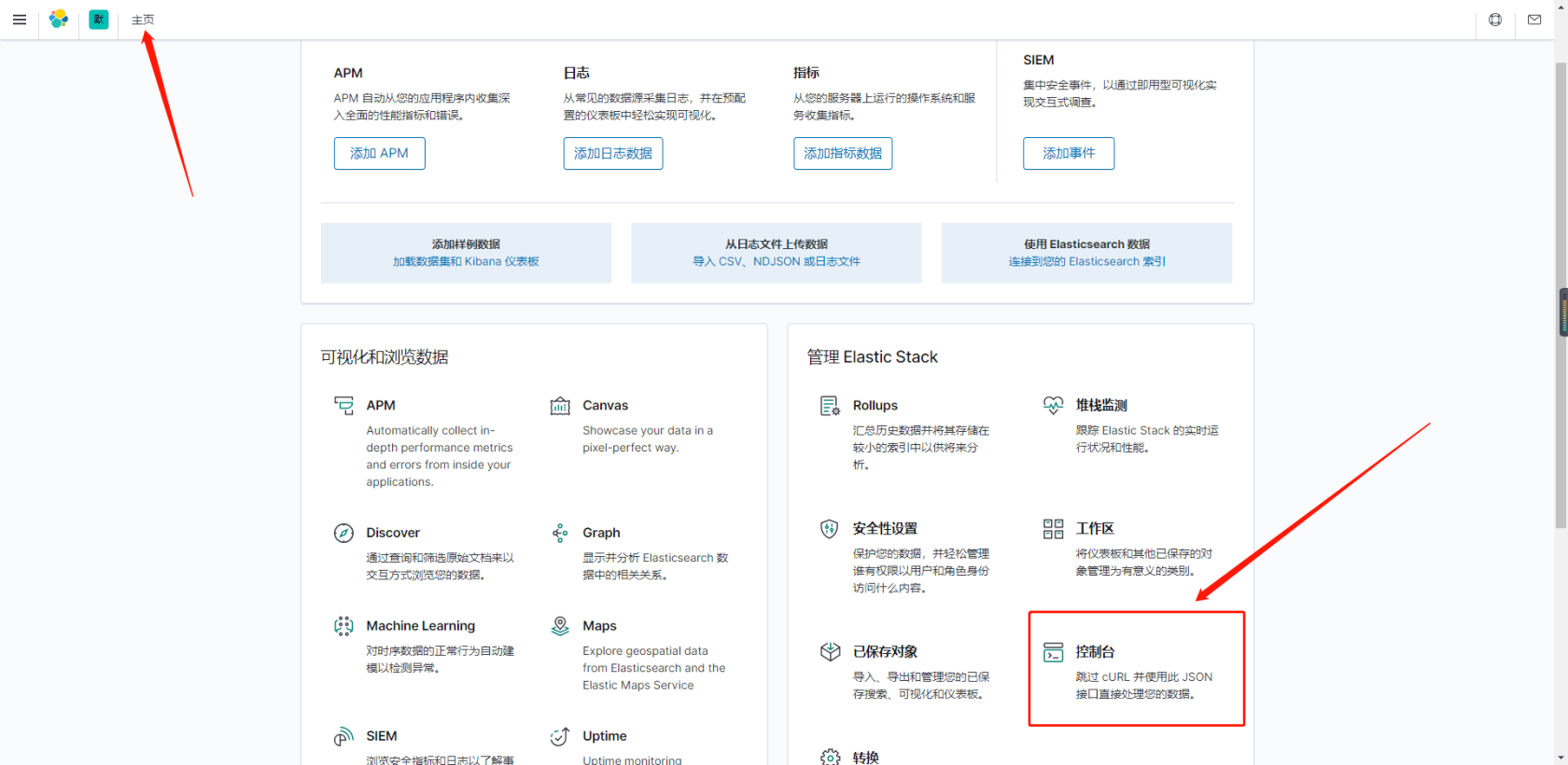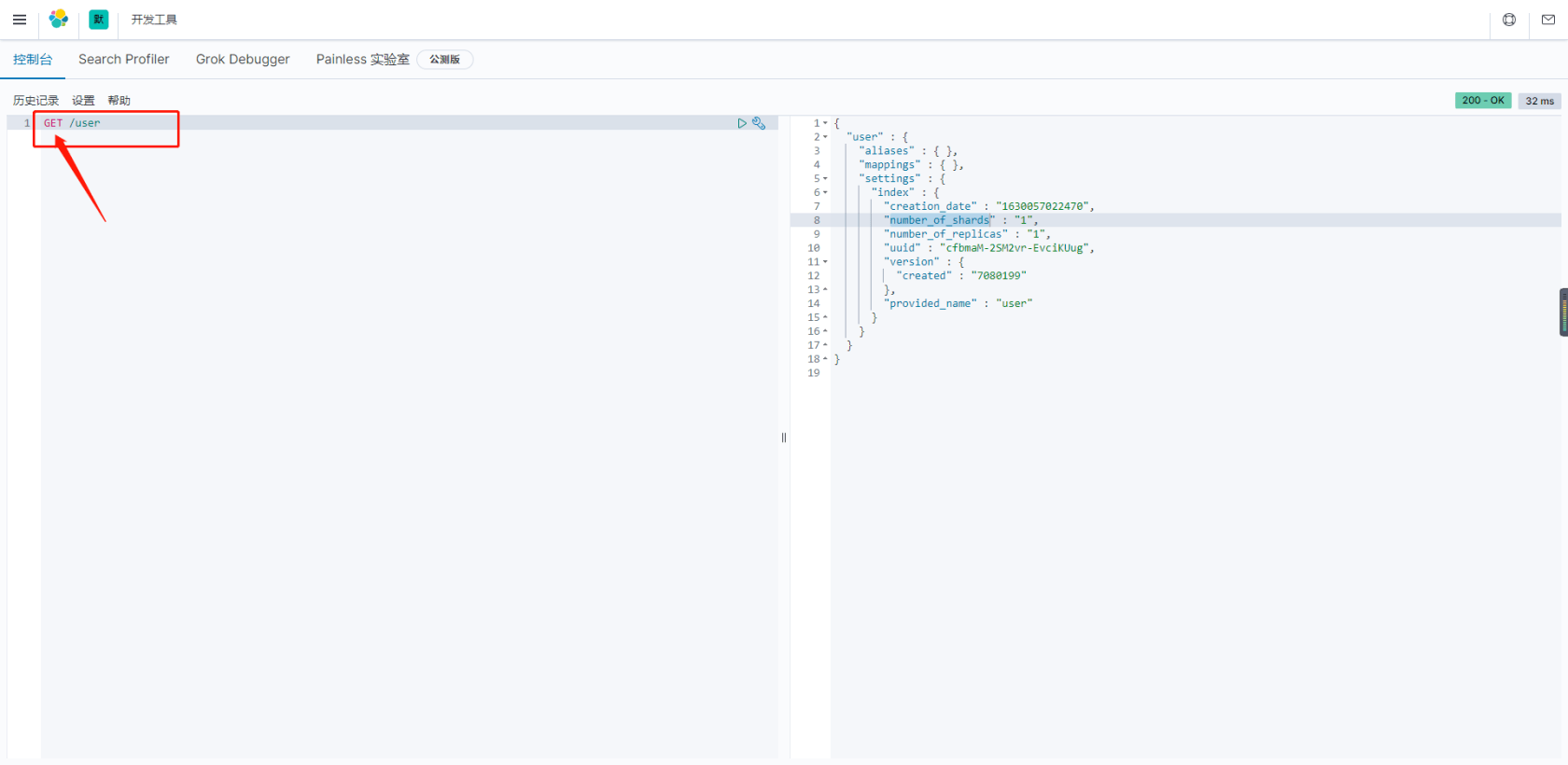Docker-ElasticSearch7.8.1 安装及简单介绍
ElasticSearch 简介
Elasticsearch 是一个基于 Lucene 的搜索服务器。它提供了一个分布式多用户能力的 全文搜索引擎,基于 RESTful web 接口。Elasticsearch 是用Java语言开发的,并作为 Apache 许可条款下的开放源码发布,是一种流行的企业级搜索引擎。
Elasticsearch 是与名为 Logstash 的数据收集和日志解析引擎以及名为 Kibana 的分析和可视化平台一起开发的。这三个产品被设计成一个集成解决方案,称为 “Elastic Stack”(以前称为“ELK stack”)。
ElasticSearch 概念介绍
Elasticsearch 是面向文档型数据库,一条数据在这里就是一个文档。为了理解,可以将Elasticsearch 里存储文档数据和关系型数据库 MySQL 存储数据的概念进行一个类比

- es 的 Index 就相当于 MySql 的数据库
- es 的 type 相当于 MySql 的表
- es 的 Document 相当于 MySql 的一行记录
- es 的 Field 相当于 MySql 的字段
Elasticsearch 7.X 中, Type 的概念已经被删除了 本文不在讲述
- 分片:一个物理机器的性能是有瓶颈的,直接往物理机上存数据,存储数量有上限。es 采用了分片的概念,将海量数据切分成片,每一个分片,存储一部分数据。相当于 MySql 的分库, es 在一整个大的集群里,包含很多节点,每个节点又包含很多分片,这样,海量数据由集群来承载。
- 副本(replica)又叫从分片,分片的备份,防止数据丢失。并且当主分片出现物理故障时,从分片顶上去,负责数据的检索等只读请求。从分片的数量可变,不用重新建库。
Docker-Compose 安装 ElasticSearch
通过 Docker-compose 进行 ElasticSearch 和 Kibana 整合。本文所用案例在 仓库 已经集成,可根据 项目的 readmi.md 进行 clone 和使用
集成 ElasticSearch
docker-compose.yml 文件
elasticsearch:
build:
context: ./services/elasticsearch #所用镜像
args:
ELASTICSEARCH_VERSION: ${ELASTICSEARCH_VERSION} #所使用的的版本
ELASTICSEARCH_PLUGINS: ${ELASTICSEARCH_PLUGINS} #需要安装的插件
container_name: elasticsearch #容器名
environment: #设置边来你跟
- TZ=$TZ # 市区设置
- discovery.type=single-node #单节点模式
- "ES_JAVA_OPTS=-Xms512m -Xmx512m" #JVM 内存堆大小
volumes: #文件映射
- ${DATA_DIR}/esdata:/usr/share/elasticsearch/data
- ${ELASTICSEARCH_CONF_FILE}:/usr/share/elasticsearch/config/elasticsearch.yml
- ${ELASTICSEARCH_IK_CONFIG_FILE}:/usr/share/elasticsearch/config/analysis-ik/IKAnalyzer.cfg.xml #IK 分词器的词库配置文件
- ${ELASTICSEARCH_IK_DIC}:/usr/share/elasticsearch/config/analysis-ik/my.dic #自定义词库文件
hostname: elasticsearch # 主机名
restart: always
ports:
- "${ELASTICSEARCH_HOST_PORT_C}:9200" # 客户端端口
- "${ELASTICSEARCH_HOST_PORT_S}:9300" # 服务端端口
networks: #docker-compose 配置的网络组
static-network:ElasticSearch 默认安装的 IK 分词器,所以先把词库配置文件映射出来,方便自定义词库
.env 文件
ELASTICSEARCH_VERSION=7.8.1 # 版本号
ELASTICSEARCH_CONF_FILE=./services/elasticsearch/elasticsearch.yml # es配置文件
ELASTICSEARCH_HOST_PORT_C=9200 #端口
ELASTICSEARCH_HOST_PORT_S=9300 #服务端端口
ELASTICSEARCH_PLUGINS=analysis-ik # es 需要安装的插件
ELASTICSEARCH_IK_CONFIG_FILE=./services/elasticsearch/ik/IKAnalyzer.cfg.xml
ELASTICSEARCH_IK_DIC=./services/elasticsearch/ik/my.dic集成 Kibana
Kibana 是一个开源的分析与可视化平台,设计出来用于和 Elasticsearch 一起使用的。你可以用kibana 搜索、查看存放在 Elasticsearch 中的数据。Elasticsearch、Logstash 和 Kibana 这三个技术就是我们常说的ELK技术栈,可以说这三个技术的组合是大数据领域中一个很巧妙的设计。一种很典型的MVC思想,模型持久层,视图层和控制层。Logstash担任控制层的角色,负责搜集和过滤数据。Elasticsearch担任数据持久层的角色,负责储存数据。而 Kibana 担任视图层角色,拥有各种维度的查询和分析,并使用图形化的界面展示存放在 Elasticsearch 中的数据。
docker-compose.yml 文件
kibana:
image: kibana:${KIBANA_VERSION} # 镜像
container_name: kibana # 容器名
environment: #参数
TZ: "$TZ"
elasticsearch.hosts: http://elasticsearch:9200 # 和 es 进行关联
I18N_LOCALE: "${KIBANA_I18N_LOCALE}" #语言设置
hostname: kibana #主机名
depends_on: # Kibana 启动要取决于 es 是否启动
- elasticsearch
restart: always
ports:
- "${KIBANA_HOST}:5601"
networks:
static-network:.env 文件
#
# KIBANA
#
KIBANA_VERSION=7.8.1
KIBANA_HOST=5601
KIBANA_I18N_LOCALE=zh-CN运行 ElasticSearch
当集成完毕后,通过 docker-compose up -d 来进行启动和后台运行,通过 Docker 客户端可以看到

此时访问本地或服务器的 9200 端口可查看 es

运行查看 Kibana,请求本地或服务器的 5601 端口,可查看

ElasticSearch 使用
es 是基于 RESTful web 接口,所以根据不同的请求,可进行不同的操作,本文使用 Kibana 工具进行对 es 的访问和使用


索引简单基础使用
要是用 es 存储数据,需要先创建一个 索引 (相当于 MySql 的数据库)
通过
PUT请求创建一个简单的索引

通过
GET获取刚创建的索引

{ "user" : { //索引名 "aliases" : { }, //别名 "mappings" : { }, //映射 "settings" : { //设置 "index" : { "creation_date" : "1630057022470", //创建时间 "number_of_shards" : "1", //分片数量 "number_of_replicas" : "1", //备份数量 "uuid" : "cfbmaM-2SM2vr-EvciKUug", //唯一标识 "version" : { "created" : "7080199" }, "provided_name" : "user" } } } }通过
DELETE方法删除索引

文档简单基础使用
索引创建好之后,就可以通过接口来创建文档,并添加数据。这里的文档可以类比为关系型数
据库中的表数据,添加的数据格式为 JSON 格式
通过
POST方法来创建文档,需加上默认的 type 类型_doc

{ "_index" : "students", //索引名 "_type" : "_doc", //默认 type 类型 "_id" : "-vBqm3sBvfOuEZni9DUz", //生成的唯一id,类比 mysql 的 id "_version" : 1, //版本 "result" : "created", //操作结果 "_shards" : { //分片 "total" : 2, //分片总数 "successful" : 1, "failed" : 0 }, "_seq_no" : 0, "_primary_term" : 1 }上面创建数据后,由于没有指定数据唯一性标识(ID),默认情况下,ES 服务器会随机生成,
创建指定
id的数据,如果有 id,使用PUT方法也可以

通过
GET方法,查看文档,需要带入 id 进行查询

通过
POST方法,修改某一个字段的值


通过
DELETE方法删除文档数据


删除一个文档不会立即从磁盘上移除,它只是被标记成已删除(逻辑删除)。当然没有 id,也可以根据查询条件进行删除,后续会说明
索引映射
映射是定义文档及其包含的字段如何存储和索引的过程,相当于 MySql 的表字段类型设置。每个文档都是一个字段的集合,每个字段都有自己的 数据类型。
映射和索引是一对一的关系。映射分为 静态映射 和 动态映射。
动态映射
静态映射:添加文档时,如果检测到新字段,Elasticsearch会新建该文档字段的特性生成一个动态映射,也就是 Es 自动推断并设置新字段的数据类型等。
字段映射类型和JSON文档字段类型的关系如下:
| JSON数据类型 | ES 推断的数据类型 |
|---|---|
| null | 未添加字段 |
| true 或者 false | boolean |
| double | float |
| integer | long |
| object | object |
| array | 取决于数组中的第一个非null值 |
| string | 根据字符串内容特征而定,有可能为text/keyword/double/long/date类型等 |
使用 Kibana 向 ES 创建如下文档
PUT /person/_doc/1
{
"id": 1,
"name": "张三",
"height": 180.52,
"man": true,
"country": "中国",
"born": "1950-6-14",
"child": ["李四", "王五", "赵六"]
}ES 会自动创建 person 索引,并动态映射字段类型
GET /person/_mapping 查询索引的映射信息
{
"person" : {
"mappings" : {
"properties" : {
"born" : {
"type" : "text",
"fields" : {
"keyword" : {
"type" : "keyword",
"ignore_above" : 256
}
}
},
"child" : {
"type" : "text",
"fields" : {
"keyword" : {
"type" : "keyword",
"ignore_above" : 256
}
}
},
"country" : {
"type" : "text",
"fields" : {
"keyword" : {
"type" : "keyword",
"ignore_above" : 256
}
}
},
"height" : {
"type" : "float"
},
"id" : {
"type" : "long"
},
"man" : {
"type" : "boolean"
},
"name" : {
"type" : "text",
"fields" : {
"keyword" : {
"type" : "keyword",
"ignore_above" : 256
}
}
}
}
}
}
}可以看到 ES 依据创建的 JSON 数据推断并创建了数据的类型
静态映射
既然 ES 能自动推断字段类型,那么也就可以在创建索引的时候,手动进行字段的类型定义,类似于MySQL 的建表操作。
- 通过
PUT /students/_mapping向 students 索引建立静态映射PUT /students/_mapping { "properties":{ "title":{ "type": "keyword", "index": true }, "image":{ "type":"keyword", "index": false }, "content":{ "type":"text", "index":true, "analyzer":"ik_max_word" }, "sell":{ "type":"long" } } }
- 通过
GET /students/_mapping查看创建的映射信息{ "students" : { "mappings" : { "properties" : { "age" : { "type" : "long" }, "content" : { "type" : "text", "analyzer" : "ik_max_word" }, "desc" : { "type" : "text", "fields" : { "keyword" : { "type" : "keyword", "ignore_above" : 256 } } }, "image" : { "type" : "keyword", "index" : false }, "name" : { "type" : "text", "fields" : { "keyword" : { "type" : "keyword", "ignore_above" : 256 } } }, "sell" : { "type" : "long" }, "sex" : { "type" : "text", "fields" : { "keyword" : { "type" : "keyword", "ignore_above" : 256 } } }, "title" : { "type" : "keyword" } } } } }
关于索引的静态映射,基础的数据有
- 字段名:任意填写,字段名字
- type:类型,就是字段类型,Es 支持的字段类型有很多,常用的有
- string
- text 可分词,字段的内容会被分词器进行分词,然后形成倒排索引
- keyword 不可分词,数据会作为完整字段进行匹配
- Numerical
- 基本数据类型:long、integer、short、byte、double、float、half_float
- 浮点数的高精度类型:scaled_float
- Date 日期类型
- array 数组类型
- object 对象类型
- string
- index:是否索引,默认为 true,也就是说你不进行任何配置,所有字段都会被索引
true:字段会被索引,则可以用来进行搜索
false:字段不会被索引,不能用来搜索 - analyzer:分词器,对这个字段使用那种分词器,这里的 ik_max_word 即使用 ik 分词器
string 的 text 和 keyword
text
1:支持分词,全文检索,支持模糊、精确查询,不支持聚合,排序操作; 2:test类型的最大支持的字符长度无限制,适合大字段存储; 使用场景: 存储全文搜索数据, 例如: 邮箱内容、地址、代码块、博客文章内容等。 默认结合standard analyzer(标准解析器)对文本进行分词、倒排索引。 默认结合标准分析器进行词命中、词频相关度打分。keyword
1:不进行分词,直接索引,支持模糊、支持精确匹配,支持聚合、排序操作。 2:keyword类型的最大支持的长度为——32766个UTF-8类型的字符,可以通过设置ignore_above指定自持字符长度,超过给定长度后的数据将不被索引,无法通过term精确匹配检索返回结果。 使用场景: 存储邮箱号码、url、name、title,手机号码、主机名、状态码、邮政编码、标签、年龄、性别等数据。 用于筛选数据(例如: select * from x where status='open')、排序、聚合(统计)。 直接将完整的文本保存到倒排索引中。text 类型的数据会把内容 先进行分词,然后再 再存入 到es中。
keyword:不分词,没有数据内容进行分词处理,而是存入了整个数据!
案列说明
- 创建 test 索引
PUT /test - 创建静态映射,映射两个字段
title:keyword,content:textPUT /test/_mapping { "properties":{ "title":{ "type": "keyword", "index": true }, "content":{ "type":"text", "index":true, "analyzer":"ik_max_word" } } } - 创建文档,存入数据
PUT /test/_doc/1 { "title":"分布式,高扩展,高实时", "content":"Elasticsearch 是一个分布式,高扩展,高实时的搜索与数据分析引擎" } - 通过全部内容进行匹配查询,查询 content
可以看到查询数据为空GET /test/_doc/_search { "query":{ "term":{ "content":"Elasticsearch 是一个分布式,高扩展,高实时的搜索与数据分析引擎" } } } # 查询结果 { "took" : 0, "timed_out" : false, "_shards" : { "total" : 1, "successful" : 1, "skipped" : 0, "failed" : 0 }, "hits" : { "total" : { "value" : 0, "relation" : "eq" }, "max_score" : null, "hits" : [ ] } }
使用 title 查询
可看到对GET /test/_doc/_search { "query":{ "term":{ "title":"分布式,高扩展,高实时" } } } # 查询结果 { "took" : 0, "timed_out" : false, "_shards" : { "total" : 1, "successful" : 1, "skipped" : 0, "failed" : 0 }, "hits" : { "total" : { "value" : 1, "relation" : "eq" }, "max_score" : 0.2876821, "hits" : [ { "_index" : "test", "_type" : "_doc", "_id" : "1", "_score" : 0.2876821, "_source" : { "title" : "分布式,高扩展,高实时", "content" : "Elasticsearch 是一个分布式,高扩展,高实时的搜索与数据分析引擎" } } ] } }content的text类型进行全部内容匹配查不到数据,而对title的keyword类型进行全部内容匹配成功查到数据。
可通过GET /test/_analyze查看这条数据在存入 es 的时候分词情况GET /test/_analyze { "field": "title", "text":"分布式,高扩展,高实时" } #分词结果 { "tokens" : [ { "token" : "分布式,高扩展,高实时", "start_offset" : 0, "end_offset" : 11, "type" : "word", "position" : 0 } ] } ```
存储数据的时候不会对 title 的内容进行分词,而是全部内容存入 es
查看 content 存入情况
GET /test/_analyze
{
"field": "content",
"text":"Elasticsearch 是一个分布式,高扩展,高实时的搜索与数据分析引擎"
}
#分词结果
{
"tokens" : [
{
"token" : "elasticsearch",
"start_offset" : 0,
"end_offset" : 13,
"type" : "ENGLISH",
"position" : 0
},
{
"token" : "是",
"start_offset" : 14,
"end_offset" : 15,
"type" : "CN_CHAR",
"position" : 1
},
{
"token" : "一个",
"start_offset" : 15,
"end_offset" : 17,
"type" : "CN_WORD",
"position" : 2
},
{
"token" : "一",
"start_offset" : 15,
"end_offset" : 16,
"type" : "TYPE_CNUM",
"position" : 3
},
{
"token" : "个",
"start_offset" : 16,
"end_offset" : 17,
"type" : "COUNT",
"position" : 4
},
{
"token" : "分布式",
"start_offset" : 17,
"end_offset" : 20,
"type" : "CN_WORD",
"position" : 5
},
{
"token" : "分布",
"start_offset" : 17,
"end_offset" : 19,
"type" : "CN_WORD",
"position" : 6
},
{
"token" : "式",
"start_offset" : 19,
"end_offset" : 20,
"type" : "CN_CHAR",
"position" : 7
},
{
"token" : "高",
"start_offset" : 21,
"end_offset" : 22,
"type" : "CN_CHAR",
"position" : 8
},
{
"token" : "扩展",
"start_offset" : 22,
"end_offset" : 24,
"type" : "CN_WORD",
"position" : 9
},
{
"token" : "高",
"start_offset" : 25,
"end_offset" : 26,
"type" : "CN_CHAR",
"position" : 10
},
{
"token" : "实时",
"start_offset" : 26,
"end_offset" : 28,
"type" : "CN_WORD",
"position" : 11
},
{
"token" : "的",
"start_offset" : 28,
"end_offset" : 29,
"type" : "CN_CHAR",
"position" : 12
},
{
"token" : "搜索",
"start_offset" : 29,
"end_offset" : 31,
"type" : "CN_WORD",
"position" : 13
},
{
"token" : "与",
"start_offset" : 31,
"end_offset" : 32,
"type" : "CN_CHAR",
"position" : 14
},
{
"token" : "数据",
"start_offset" : 32,
"end_offset" : 34,
"type" : "CN_WORD",
"position" : 15
},
{
"token" : "据分析",
"start_offset" : 33,
"end_offset" : 36,
"type" : "CN_WORD",
"position" : 16
},
{
"token" : "分析",
"start_offset" : 34,
"end_offset" : 36,
"type" : "CN_WORD",
"position" : 17
},
{
"token" : "引擎",
"start_offset" : 36,
"end_offset" : 38,
"type" : "CN_WORD",
"position" : 18
}
]
}对 content 的内容会先进行分词,在存储,所以使用全内容进行匹配时,在 es 中是找不到的。
本文对 ElasticSearch 的使用是最最最基本的。
感谢: www.cnblogs.com/sanduzxcvbnm/p/121...
blog.csdn.net/abc123lzf/article/de...
本作品采用《CC 协议》,转载必须注明作者和本文链接



 关于 LearnKu
关于 LearnKu



